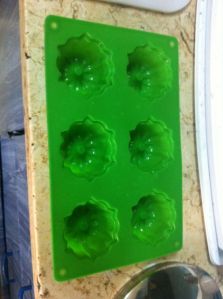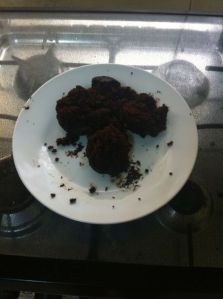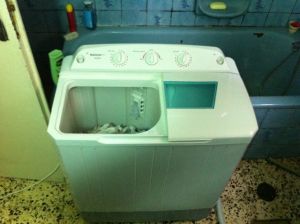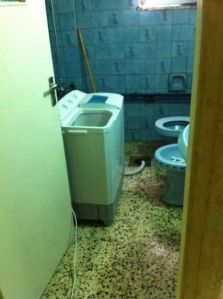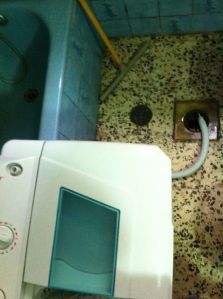I have found this recipe online several times, often with the title “The Best Chocolate Cake Ever!!!” And while it is a very good, very chocolatey chocolate cake, I don’t know if I could say it’s the best ever. That is a very big claim. But yesterday, after much pleading from Lulu and feeling like we all needed the mood boost a chocolate cake brings, I decided to bust out my new silicon cupcake pan. I was hoping for cute little mini-bundt cake looking cupcakes.
Instead, I got this:
Now, it’s kind of hard to tell from this lousy photograph, but that is a clumpy pile of chocolate cakes that have none of the decorative grooves and whatnot I expected. Which brings me to my problem with this cake: both times I have made it, it has refused to come out (the first time I used a metal cake pan). No matter how good a cake tastes (and this one does taste very good), I cannot consider it “the best ever” it it sticks to the pan and breaks. I’m a bit perplexed as to how to fix this…increase the baking temperature? Cook it longer? Maybe oil the pan instead of butter-and-flouring it? If any of you baker pros out there have any tips, please leave them in the comments!
No matter how this cake looks, it does taste very good, and the recipe is a nice basic one to have on hand. You could easily tweak it a little bit (like I did for Christmas, adding ground cardamom and orange zest) to add a flavor boost. And, um, if it does happen to fall apart on you, just follow Lulu’s example:
 Grab the biggest clump you can find and shove it in your mouth!
Grab the biggest clump you can find and shove it in your mouth!
(Maybe) The Best Chocolate Cake Ever
1 cup flour
1 cup sugar
1/3 cup cocoa powder
1 tsp. baking powder
3/4 tsp. baking soda
1/2 tsp. salt
1/2 tsp. espresso powder (I used 1 tsp. instant coffee added to the boiling water)
1/2 cup milk
1/4 cup vegetable oil
1 egg
1 tsp. vanilla
1/2 cup boiling water
In a large bowl, mix the dry ingredients thoroughly. (You can do this recipe by had with a whisk or with a hand mixer.) Add the remaining ingredients except the boiling water and mix thoroughly. Add the water (with the instant coffee if you’re using that) and mix as fast as possible for one minute. Bake at 350 F for 30-35 minutes in a 9″ pan that has been greased and floured.

